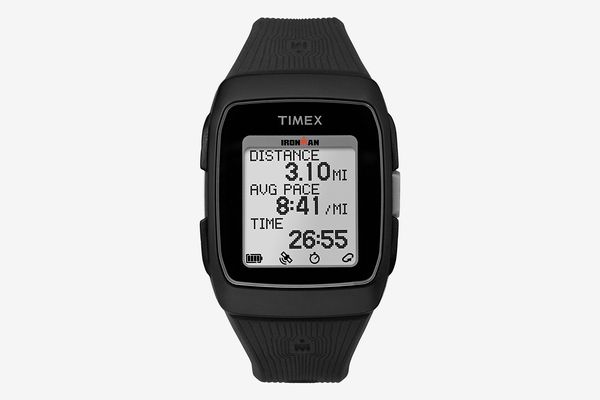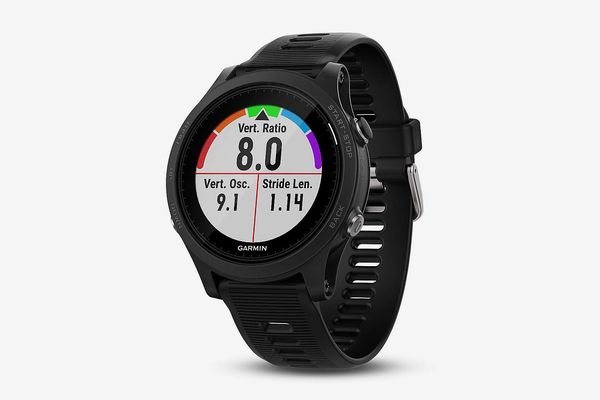
While fitness trackers are great for monitoring your daily activities and sleep patterns, and smartwatches can sync with your phone for quick access to music and messaging apps, GPS running watches are uniquely geared toward runners looking to gauge, review, and improve their performance. Today’s running watches are loaded with features that go beyond tracking speed and distance: They can measure your fitness level, prescribe recovery time, create race training plans, analyze your gait, and more. And as it goes with the benefits of wool socks to the ideal length of split shorts, runners have very strong opinions about their GPS watches.
There’s a slew of factors that go into choosing the right one: How do you know which watch is right for your goals? Will that budget model last through your marathon training? Will you really need all those features in the top-of-the-line model? To find out, I spoke with coaches, trainers, and prolific runners about finding the best watch for your specific needs.
If you’ve been considering buying a smartwatch and you’ve also just started running, get yourself a watch that can do both. “The Apple Watch is a good option to help novices appreciate accountability and structure,” said Meghan Takacs, a running trainer for the fitness app Aaptiv. “It offers a daily steps goal to meet, along with reminders to get them in [and] the ability to sync popular apps.” If you’re becoming more serious and want even more data, City Coach co-founder and head coach Jonathan Cane recommends using the Apple Watch with Strava for “great feedback during and after a run.” For everyday wear, or if the running habit doesn’t stick, simply swap out the band and it’s a regular Apple Watch.
Squeaking in at just under $100, the Timex Ironman GPS is a marvel of simplicity, giving you the bare necessities and nothing more. Old-school runners have stood by this watch for years because it tells you the only two things you really need to know: how far you’ve run and how long it took.
On the other end of the complexity spectrum there’s the Suunto Spartan watch that logs more than enough metrics to fill a data geek’s heart — and Excel spreadsheets. Beyond everything a typical GPS watch does, the Suunto watch also measures altitude, total ascent and descent, vertical speed, temperature, and estimated recovery time. It also functions as a compass, works for cycling and swimming (pool and open water, obviously), and will monitor your daily activity and sleep quality.
Sally Bergesen, founder and CEO of Oiselle, called this watch “the entry level of the fancy GPS watches.” Perfect for when you start slating speed work, like interval training and tempo runs, into your weekly running schedule, the Forerunner 235 syncs up to the Garmin Connect website, where you can create workouts and send them directly to the watch. It also allows for easy upload of workout data to share with running buddies or a coach. Bergesen likes the accompanying smartphone app “with more data on your running than you can shake a stick at,” like measuring V02 max for improving fitness.
For $100 less, the Forerunner 35 has all of the same elements needed for more intense training, including instantaneous speed display and the ability to program in intervals, but without “fancy metrics that will only be a distraction or confusing to new runners,” according to Jason Fitzgerald, founder of Strength Running, a USA Track & Field–certified running coach and 2017’s Men’s Running’s Influencer of the Year. Cane added that it “will certainly do the trick for a new runner, and will be adequate even for a more hard-core athlete.” The run/walk mode and auto-pause feature are especially helpful for running intervals — and dealing with red lights.
Cane recommends the Polar V800 for runners looking for a watch with all the bells and whistles. “It’s rather social friendly, and works nicely with Strava. I’m very much in the ‘Strava or it didn’t happen’ camp,” he said, echoing many modern runners’ feelings that tracking and sharing your progress with others is an essential part of training. It also includes sensors to measure the different aspects of running form, like cadence and stride length. Perfecting your form can help shave precious seconds off of your race times and can also reduce the risk of injuries that are caused by poor form and overstriding.
With its suite of features, the Polar M430 is like having a running coach on your wrist. Unlike one-size-fits-all training plans you can find online, the watch’s built-in programs for races from 5Ks through marathons adapt to your changing fitness level, as tracked by Polar’s proprietary running index. The running index calculates your fitness level based on pace and heart rate (which is captured right from the watch, no chest strap required). Takacs said it’s the watch she recommends “for the serious athlete,” and she uses it herself to “train in zones based on pace.”
When your goals shift from finishing a race to winning one, “the Garmin 935 is the queen bee,” according to running coach Jenny Hadfield. Through tracking V02 max, Hadfield said it guides “you on when you should push and when to recover,” which is helpful in gauging if you’re in shape to go for a personal best or an age-group win. She also likes that it “includes Strava live segments [past times on popular courses], so you can push to beat your personal record or someone else’s and earn medals!” Fitzgerald also likes the 935 for advanced runners because of its “features, like a barometer, altimeter, compass, and other performance metrics that will help fine-tune their training.”
In addition to running, the Forerunner 735XT features multisport training modes for tracking your swimming and biking progress. With a 14-hour battery life in active GPS mode, it also has the endurance for longer events like Ironman races. Steph Willett, a triathlete and team manager of Volée, Oiselle’s global community of female runners, likes that, for a watch with so many features, “it’s light, fairly intuitive, and doesn’t look like a calculator on my wrist.” Even though she hasn’t found it quite as accurate as a chest strap, she’s also a fan of the convenient built-in heart-rate monitor: “Comfort wins, even if there might be a small discrepancy.”
The Strategist is designed to surface the most useful, expert recommendations for things to buy across the vast e-commerce landscape. Some of our latest conquests include the best women’s jeans, rolling luggage, pillows for side sleepers, ultra-flattering pants, and bath towels. We update links when possible, but note that deals can expire and all prices are subject to change.
Every editorial product is independently selected. If you buy something through our links, New York may earn an affiliate commission.














